Rank Species | Phylum Chordata | |
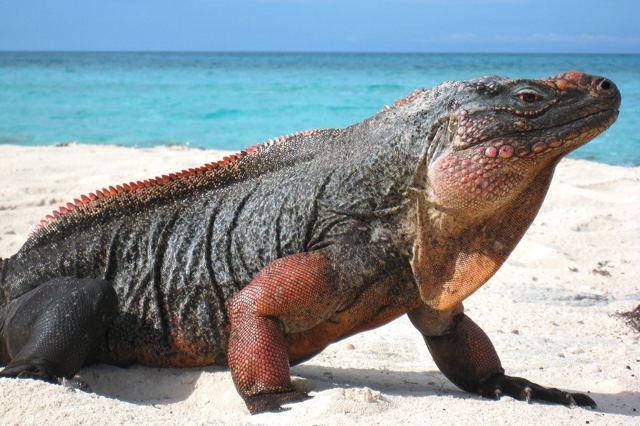 | ||
Lower classifications | ||
The northern Bahamian rock iguana (Cyclura cychlura) is a species of lizard of the genus Cyclura that is found on the Andros and Exuma islands in the Bahamas. Its status on the IUCN Red List is Vulnerable, with a wild population of less than 5,000 animals.
Contents

Taxonomy
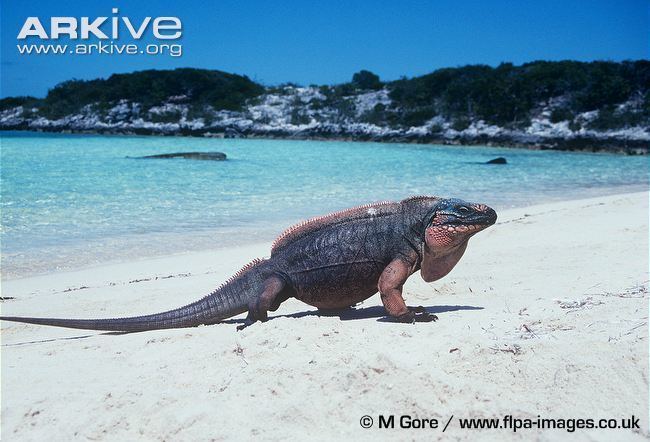
The northern Bahamian rock iguana's generic name Cyclura and specific name Cychlura are derived from the Ancient Greek cyclos (κύκλος) meaning "circular" and ourá (οὐρά) meaning "tail", after the thick-ringed tail characteristic of all cyclurids. Its closest relatives are Cyclura nubila on Cuba, and Cyclura lewisi on Grand Cayman. All three apparently diverged from a common ancestor some 3 million years ago.
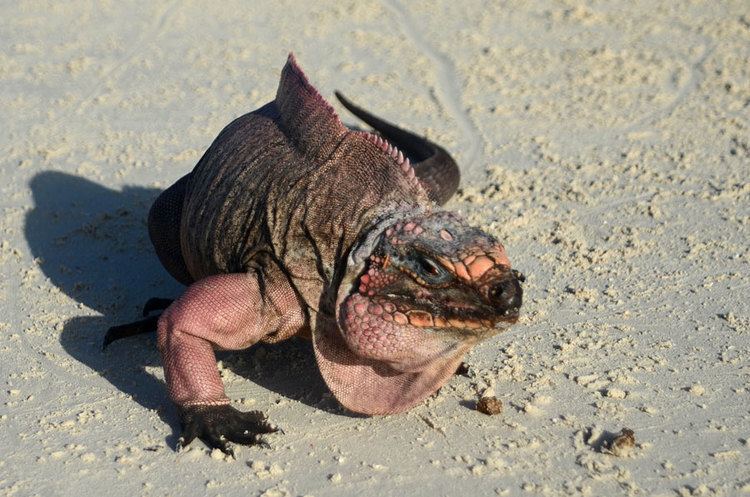
There are three subspecies of the northern Bahamian rock iguana: the Andros Island iguana (Cyclura cychlura cychlura), Allen's Cay iguana (Cyclura cychlura inornata), and the Exuma Island iguana (Cyclura cychlura figginsi). Biologist Catherine Malone describes C. c. cychlura as being phylogenetically different from C. c. figginisi and C. c. inornata but does not recognize them as separate species; the three are listed as subspecies until further study has been completed.
Anatomy and morphology
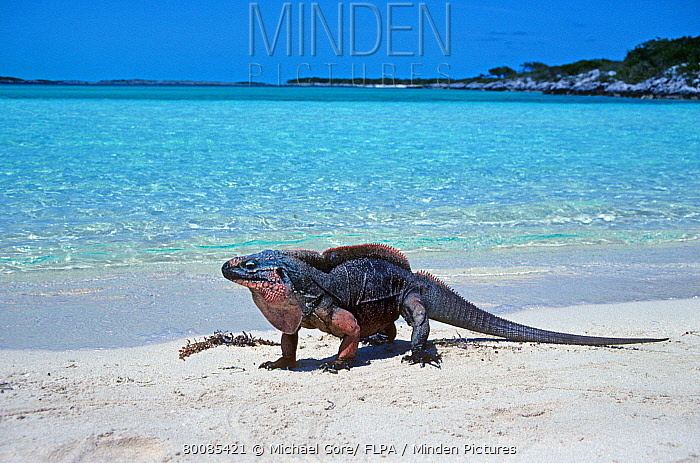
This species, like other species of Cyclura, is sexually dimorphic; males are larger than females, and have more prominent dorsal crests and "horns" in addition to more prominent femoral pores on their thighs, which are used to release pheromones.
Diet

Like all Cyclura species, the northern Bahamian rock iguana is primarily herbivorous, consuming leaves, flowers and fruits from over 100 different plant species. This diet is very rarely supplemented with insect larvae, crabs, slugs, dead birds and fungi.
Status
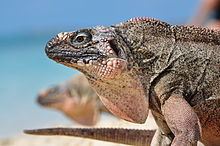
It is estimated that the current global population of all three subspecies is less than 5,000 members and is declining. The population has decreased by at least 50% over the last 60 years.
Causes of decline
Hunting is the main factor threatening imminent extinction for this iguana. It is the only Caribbean species of iguana which is still regularly hunted for food for human consumption. Feral pigs pose a threat to the iguanas, as they dig up eggs from iguana nests within termite mounds. Feral and domestic dogs prey upon juvenile and adult iguanas as well. Feral goats have also been known to compete with the iguanas for food.
As with other rock iguanas, their habitat is in rapid decline due to development and logging.
